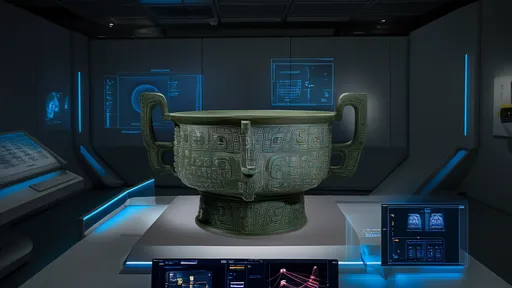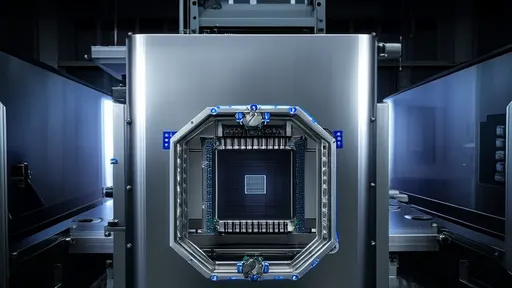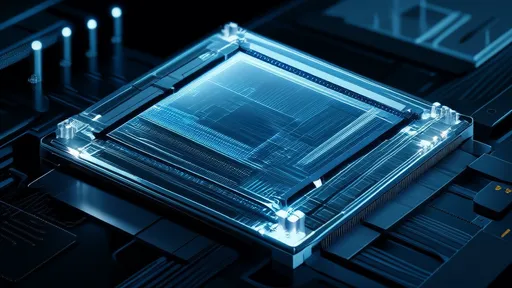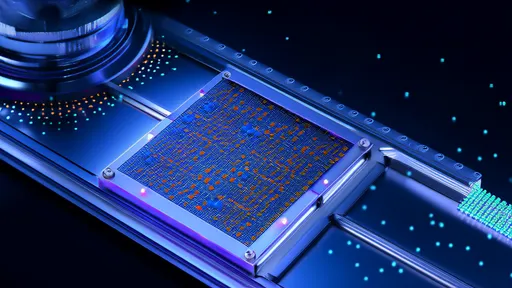The rapid evolution of Artificial Intelligence Generated Content (AIGC) is reshaping industries, and nowhere is this transformation more palpable than in the realm of architecture. Architects, long revered as the masterminds behind physical structures, now find themselves at a crossroads where digital and physical design converge. The AIGC era demands not just adaptability but a fundamental rethinking of what it means to be an architect in a world where algorithms can generate designs, optimize spaces, and even predict structural failures with uncanny accuracy.
The traditional role of the architect is undergoing a seismic shift. Gone are the days when blueprints were painstakingly drawn by hand, and client presentations relied solely on physical models. Today, AI-powered tools can produce intricate designs in minutes, analyze environmental impacts, and simulate user experiences in virtual environments. This doesn’t render architects obsolete—far from it. Instead, it elevates their role from mere designers to strategic orchestrators of technology, creativity, and human-centric solutions.
One of the most profound changes is the way architects now interact with data. In the past, data was a supplementary tool, often used in post-design analysis. Now, it’s the lifeblood of the design process. Machine learning algorithms can sift through vast datasets—ranging from climate patterns to urban traffic flows—to inform design decisions in real time. Architects must now be fluent not only in aesthetics and engineering but also in data science and algorithmic thinking. This new literacy is what separates the architects who thrive from those who risk being left behind.
Collaboration has taken on a new dimension in the AIGC era. Architects are no longer working in isolation or even just within multidisciplinary teams of humans. They’re collaborating with AI systems that can suggest design alternatives, optimize material usage, and even predict how a building will perform over its lifespan. This symbiotic relationship between human and machine requires architects to develop a nuanced understanding of AI’s capabilities and limitations. The best outcomes emerge when architects leverage AI as a creative partner rather than viewing it as a threat or a mere tool.
The rise of generative design is perhaps the most visible manifestation of this shift. Generative design software, powered by AI, can produce thousands of design iterations based on a set of parameters. Architects then curate these options, applying their expertise to select and refine the most promising concepts. This process doesn’t eliminate the architect’s role; it amplifies it. The architect’s judgment, honed by experience and intuition, becomes the critical filter through which AI-generated possibilities are evaluated and realized.
Sustainability, always a cornerstone of good architecture, has become even more central in the AIGC age. AI can model energy efficiency, carbon footprints, and lifecycle impacts with unprecedented precision. Architects who embrace these tools can create buildings that aren’t just visually stunning but are also environmentally responsible from conception to demolition. This alignment of aesthetics and ethics represents one of the most exciting opportunities in contemporary architecture.
Yet, with these opportunities come challenges. The democratization of design through AIGC means that architectural services are becoming more accessible, potentially disrupting traditional business models. Clients can now generate basic designs using AI platforms, changing expectations around cost, speed, and customization. Architects must articulate the unique value they bring—the human touch that interprets cultural contexts, understands emotional needs, and envisions spaces that resonate on a profoundly human level.
The education of future architects is also in flux. Architecture schools that once emphasized drafting skills and historical styles must now incorporate courses on computational design, machine learning applications, and human-AI collaboration. The architects of tomorrow will need to be as comfortable coding as they are sketching, as adept at training algorithms as they are at training young associates.
Ethical considerations loom large in this new landscape. As AI systems take on more design responsibilities, questions arise about authorship, accountability, and bias in algorithmic decision-making. Architects must ensure that AI tools are used responsibly, that they don’t perpetuate existing inequalities in access to good design, and that the human experience remains at the center of all architectural endeavors.
Looking ahead, the most successful architects will be those who view AIGC not as a disruption but as an expansion of their creative palette. They’ll be the ones who harness AI to push boundaries while maintaining the essence of what makes architecture an art form. The buildings of the future—responsive, sustainable, and deeply human—will be testament to architects who successfully navigated this transformation.
The AIGC era doesn’t mark the end of architecture as we know it. It heralds the beginning of a new chapter where human creativity and artificial intelligence coalesce to shape spaces that were previously unimaginable. For architects willing to evolve, the possibilities are as limitless as the designs their AI collaborators can generate.

By /Aug 7, 2025

By /Aug 7, 2025

By /Aug 7, 2025

By /Aug 7, 2025

By /Aug 7, 2025

By /Aug 7, 2025

By /Aug 7, 2025

By /Aug 7, 2025

By /Aug 7, 2025

By /Aug 7, 2025

By /Aug 7, 2025

By /Aug 7, 2025

By /Aug 7, 2025

By /Aug 7, 2025

By /Aug 7, 2025

By /Aug 7, 2025

By /Aug 7, 2025

By /Aug 7, 2025

By /Aug 7, 2025

By /Aug 7, 2025